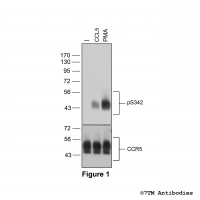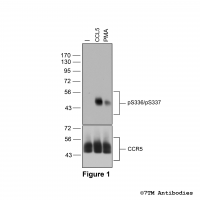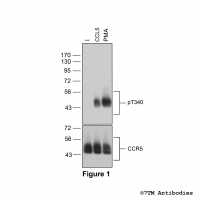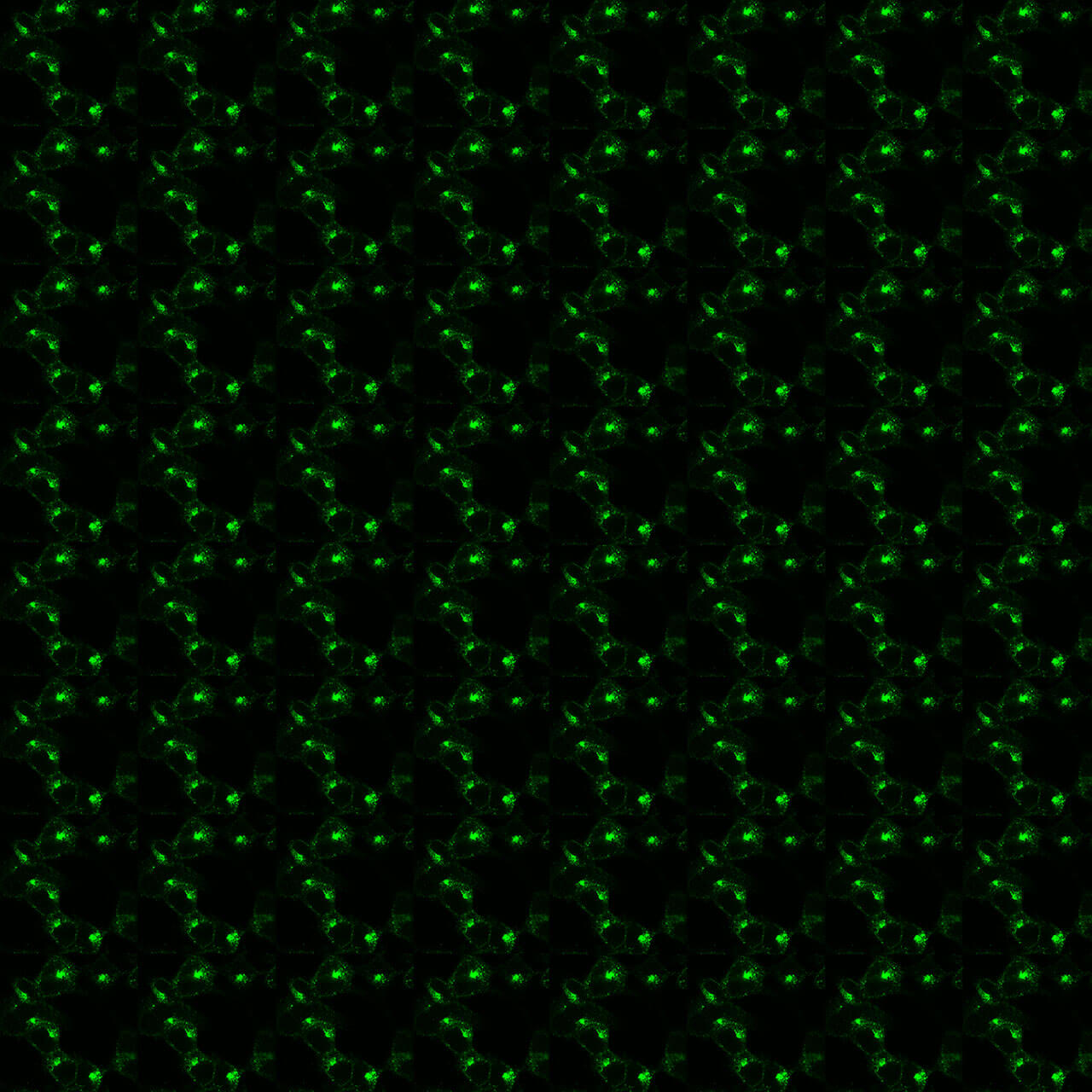No results were found for the filter!
NEW
 pS342-CCR5 (phospho-Chemokine Receptor 5 Antibody)
pS342-CCR5 (phospho-Chemokine Receptor 5 Antibody) Serine342 (S342) is a major phosphorylation site of the CCR5 receptor. The pS342-CCR5 antibody detects phosphorylation in response to high- and low-efficacy agonists and after PKC activation. S342 phosphorylation is a key regulator of...
$ 375.00 *
NEW
 pS336/pS337-CCR5 (phospho-Chemokine Receptor 5...
pS336/pS337-CCR5 (phospho-Chemokine Receptor 5... Serine336/Serine337 (S336/S337) is a major phosphorylation site of the CCR5 receptor. The pS336/pS337-CCR5 antibody detects phosphorylation in response to high- and low-efficacy agonists and after PKC activation. S336/S337...
$ 375.00 *
NEW
 pT340-CCR5 (phospho-Chemokine Receptor 5 Antibody)
pT340-CCR5 (phospho-Chemokine Receptor 5 Antibody) Threonine340 (T340) is a major phosphorylation site of the CCR5 receptor. The pT340-CCR5 antibody detects phosphorylation in response to high- and low-efficacy agonists and after PKC activation. T340 phosphorylation is a key regulator of...
$ 375.00 *
Recently viewed


